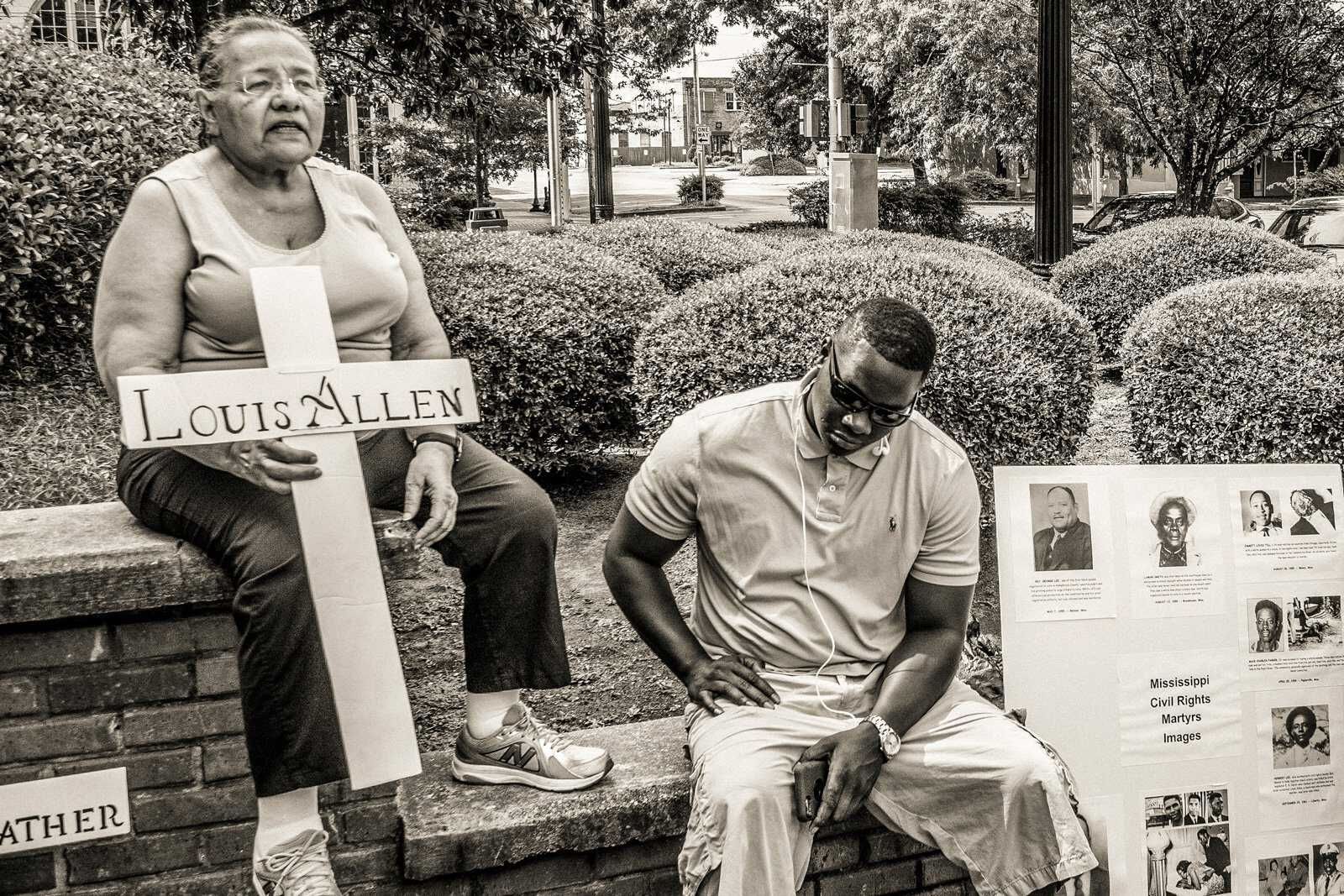This is BEN GREENBERG's portfolio site.
Contact Archives Search Feed Blog🔗 About ↑This is BEN GREENBERG's portfolio site.
Contact Archives Search Feed Blog🔗 About ↑This article was originally published by The American Prospect.
 Diane Nash outside the Lauderdale County Courthouse in Meridian, Miss. during a memorial for civil rights martyrs. Louis Allen was a Black man who was shot to death outside his home in Liberty, Miss. on January 31,1964. Photo by Ben Greenberg
Diane Nash outside the Lauderdale County Courthouse in Meridian, Miss. during a memorial for civil rights martyrs. Louis Allen was a Black man who was shot to death outside his home in Liberty, Miss. on January 31,1964. Photo by Ben Greenberg
For the last eight days in Jackson, Mississippi, reputed Ku Klux Klan member James Ford Seale has sat, mostly silent, in the James O. Eastland U.S. Courthouse. Seale has been watching the parade of witnesses take the stand — his former daughter-in-law, his pastor, a fellow Klansman, FBI agents, a retired Navy diver, an elderly church deacon, a small town newspaper publisher — to testify about his involvement in the 1964 murders of Henry Hezekiah Dee and Charles Eddie Moore, two 19-year-old black men from southwest Mississippi.
The horrific deaths of the two young men, and their families’ years of suffering without remediation, illustrate why it is so important for perpetrators to be brought to justice, even decades after the crime was committed. “I’ve had nightmares every night for 43 years,” Charles Moore’s older brother Thomas told me in April. The Dee-Moore murders also raise questions about government complicity in Civil Rights era crimes — and whether case-by-case prosecutions are an adequate response.
On May 2, 1964, Dee and Moore were hitchhiking from Meadville, Miss. and were picked up by James Seale. Seale and other Klansmen took the two men into the surrounding Homochitto National Forest and tortured and interrogated them about a possible influx of guns in Franklin County meant to arm blacks against their white attackers. Later the same day, several of the Klansmen put Dee and Moore in the trunk of a car and hauled them across the Louisiana state line, 100 miles north to a spot on the Mississippi River. Then they dumped the men into the river, weighting their bodies down with a jeep engine block and pieces of railroad track.
The Dee-Moore murders were referred to as the “Torso Murders” because only parts of the young men’s bodies were initially found in the river, starting with Moore’s lower torso on July 12, 1964. Though the FBI made an initial investigation into the homicide, it quickly dropped the case. International attention on the disappearance of civil rights activists James Chaney, Michael Schwerner and Andrew Goodman — two of whom were white northerners — and the violent response to the massive, statewide “Freedom Summer” voter registration program, pushed the Dee and Moore murders out of the media spotlight.
Decades later, there have been fewer than two dozen convictions for an untold numbers of murders of blacks and their allies during the civil rights era. And civil rights activists have differing ideas about how to remedy the situation. “It’s important to send a message to the new generation that crime doesn’t pay. Our laws have to work for us,” said John Steele, son of civil rights pioneers Cornelius and Mable Steele, who were contacts for Chaney and Schwerner in the black community in Philadelphia, Mississippi, before Klansmen murdered Chaney, Schwerner, and Goodman on June 21, 1964.